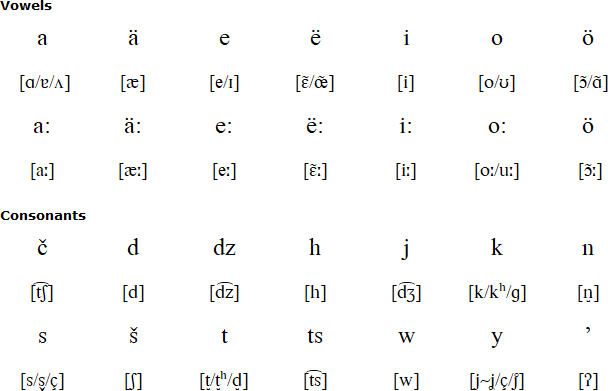Seneca is a Northern Iroquoian language with about 25 speakers on the Six Nations Reserve near Brantford in Ontario in Canada, and in western New York state and Oklahoma in the USA.
Seneca first appeared in writing in the work of Julien Garnier (1642-1730), a French Jesuit missionary who published two dictionaries of Seneca. These dictionaries were forgetten until they were rediscovered at the beginning of the 21st century in a Jesuit archive at St. Jérôme in Quebec. A protestant missionary, Asher Wright (1803-1875) and his wife Laura (1809-1886), documented the Seneca language during the 19th century, and a number of books in and about Seneca were published.
A school was set up in 1998 to teach children the Seneca language and culture. Since then the Seneca Language Revitalization Program has been working to increase use of the language and the number of speakers. There are projects to develop an online Seneca dictionary and other resources, and there are some radio broadcasts in the language in a the Seneca owned WCWE radio station.

Download an alphabet chart for Seneca (Excel)
Wayatihãẽ’ ne nyakwai’ khuh ne tyihukwaes. Ne’ nyakwai’ thutẽcunih tyawe’ũh teyucũtaikũke’ũ thutẽcunih. Taneke’ũ tyihukwaes neke’ũ ẽyuhẽsek. Teyu’kœhtũk, teyu’koœhtũk, teyu’kœhtũk. Tyihukwaes wãẽ’: ẽyuhẽsek, ẽyuhẽsek, ẽyuhẽsek. Tanenekyũ’ tyihukwaes waatkwenii’. Tanekyũ’ kayũnih ne’ unẽh wa’uhẽt wa’u’kœ khuh. Tanenẽhke’ũ waunũ’khwẽ’ ne nyakwai’ taneke’ũ uthuchiyuu’ ne tyihukwaes haswe’nũkeh. Tanenẽ’kyũ’ kayũnih sẽniyũ tetya’tetanũ haswe’nũkeh ne’ tyihukwaes.
The Bear and the Chipmunk quarreled. The Bear wanted it to be night all the time, it is said. The Chipmunk, it is said, wanted it to he day and night. The Bear said, "Dark all the time, dark all the time, dark all the time". The Chipmunk said, "Day and night, day and night, day and night". Then, it is said, the Chipmunk won. That is why it now dawns and grows dark. Then, it is said, the Bear got angry. He scratched the Chipmunk on his back. That is why the Chipmunk has three stripes down his back.
Source: http://www.language-museum.com/encyclopedia/s/seneca.php
Information about Seneca | Numbers
Information about the Seneca people and language
https://en.wikipedia.org/wiki/Seneca_language
http://www.native-languages.org/seneca.htm
http://www.languagegeek.com/rotinonhsonni/seneca.html
http://www.salamancany.org/Page/218
http://senecalanguage.com
https://www.ethnologue.com/language/see
Cayuga, Cherokee, Mohawk, Oneida, Onondaga, Seneca, Tuscarora, Wendat
Languages written with the Latin alphabet
Page last modified: 23.04.21
[top]
You can support this site by Buying Me A Coffee, and if you like what you see on this page, you can use the buttons below to share it with people you know.

If you like this site and find it useful, you can support it by making a donation via PayPal or Patreon, or by contributing in other ways. Omniglot is how I make my living.
Note: all links on this site to Amazon.com, Amazon.co.uk
and Amazon.fr
are affiliate links. This means I earn a commission if you click on any of them and buy something. So by clicking on these links you can help to support this site.
[top]